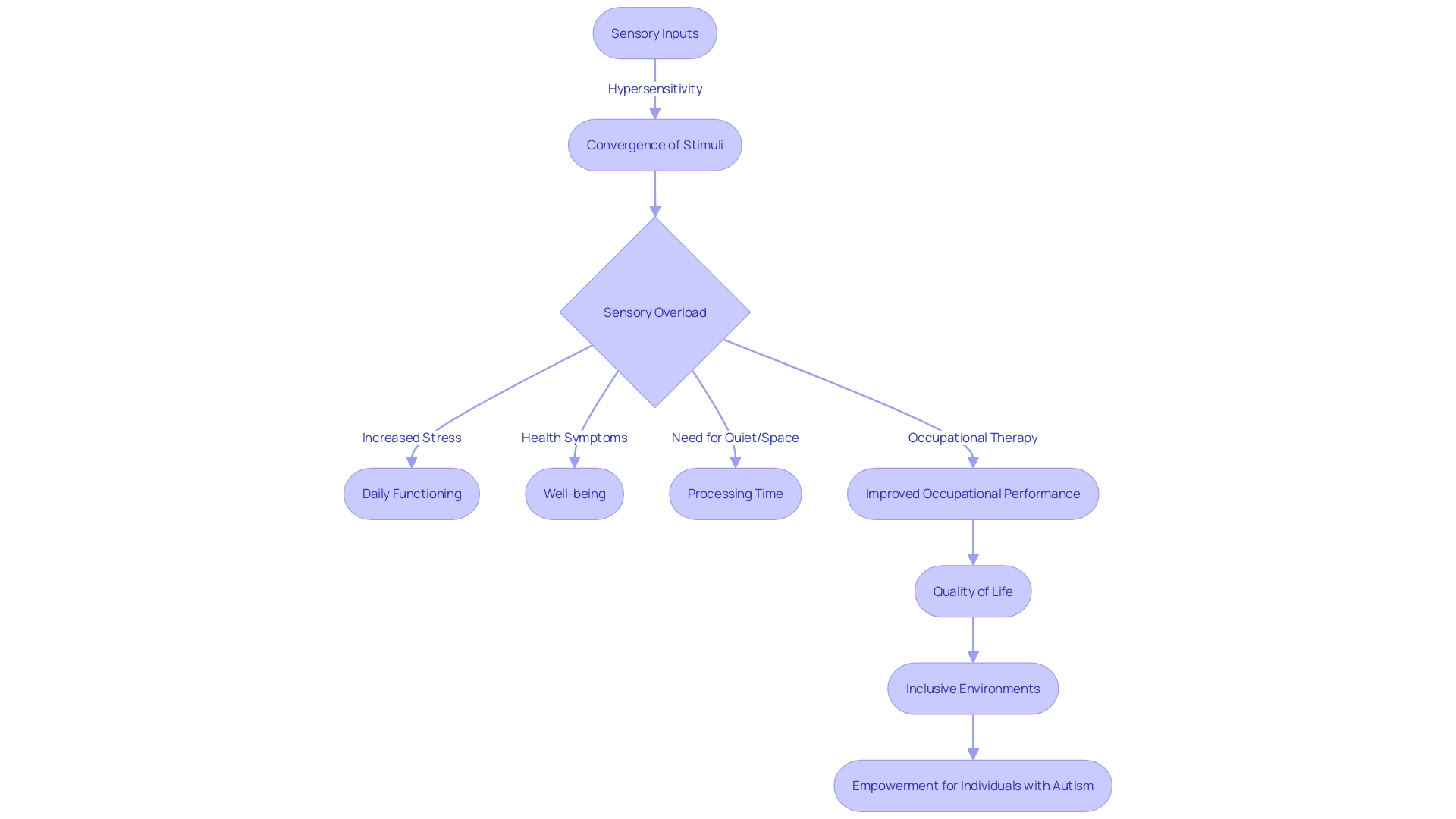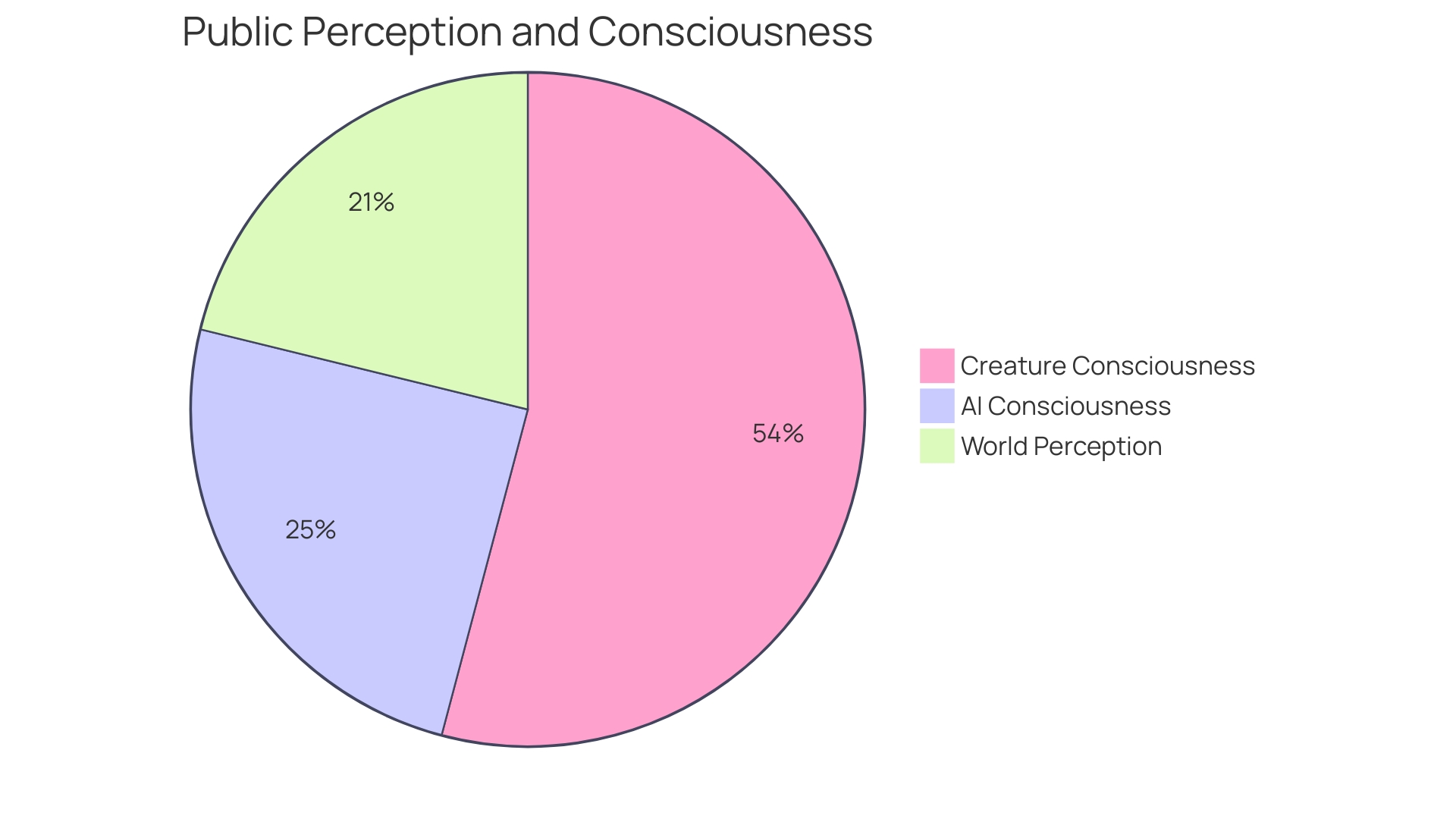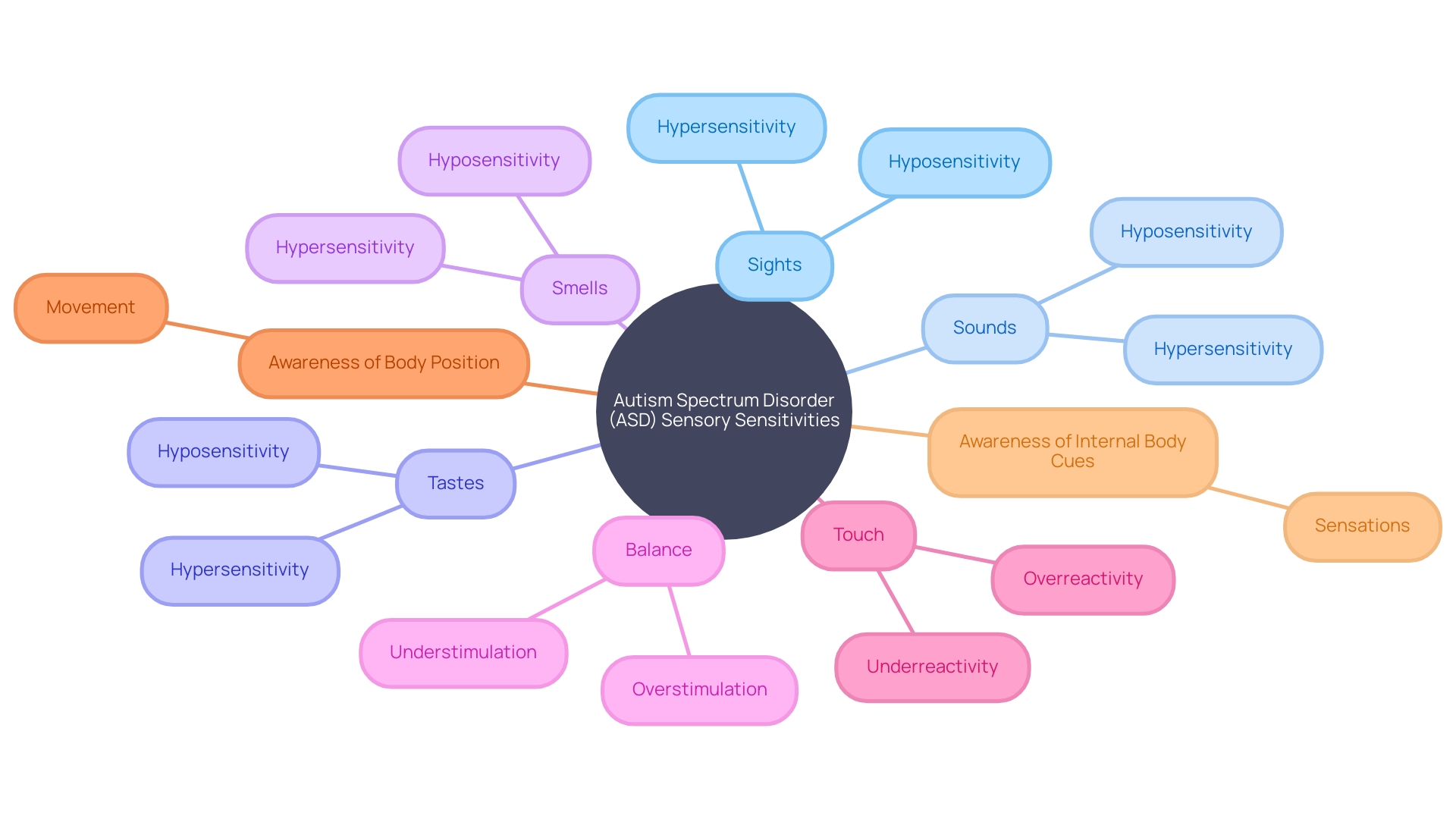Introduction
Sensory overload can be a challenging experience for individuals with Autism Spectrum Disorder (ASD) and sensory processing difficulties. The brain becomes overwhelmed with sensory input, leading to heightened stress and discomfort. This article explores the definition and causes of sensory overload, as well as its impact on autistic individuals and their daily lives.
It also delves into common triggers and symptoms of sensory overload and provides strategies for managing and preventing it. By understanding sensory processing challenges and implementing personalized approaches, individuals with ASD can navigate their environments more comfortably and confidently.
Definition of Sensory Overload
Sensory overload occurs when the brain is inundated with more sensory input than it can effectively process, which can lead to a state of heightened stress or discomfort. This can impact individuals with Autism Spectrum Disorder (ASD), a neurodevelopmental condition characterized by challenges in communication, behavior, and social interaction. Sensory processing issues are a common symptom of ASD, often manifesting as hypersensitivity (over-responsiveness) or hyposensitivity (under-responsiveness) to sensory stimuli, such as lights, sounds, textures, and smells.
These sensitivities can significantly influence an individual's behavior, learning, and development.
For individuals with ASD, navigating environments that are busy and noisy, like shopping malls or public transit, can be particularly challenging due to difficulties in filtering out excessive sensory information. The effects of sensory processing issues on daily living are profound, leading to challenges in personal care routines and overall well-being.
Occupational therapists have been employing Ayres Sensory Integration™ (ASI) interventions for over 50 years, targeting sensory-motor challenges in children with learning disorders. Current evidence-based practice (EBP) in the field combines robust research evidence with clinical experience and the individual's preferences to inform therapeutic interventions.
Moreover, recent advancements in research aim to uncover the commonalities in neural circuits among individuals with ASD, particularly focusing on the auditory system, which is often affected by hypersensitivities. Understanding the neural basis for sensory processing issues in ASD may lead to more targeted and effective interventions, improving the quality of life for those affected.
Parents and educators can access resources such as online learning series from leading autism specialists, offering in-depth knowledge about sensory processing and autism, and practical strategies to support individuals with ASD in various settings. These resources emphasize the importance of understanding the unique sensory experiences of each individual, including their tactile, proprioceptive, and vestibular systems, and how these sensory differences can influence their engagement with the world around them.
Causes of Sensory Overload
Autism, a complex neurodevelopmental condition, often comes with sensory processing challenges that can lead to intense overstimulation. This overstimulation, or sensory overload, is sometimes the result of hypersensitivity, where the brain reacts more intensely to sensory inputs like sights, sounds, and touches that are typically non-threatening. Each individual with autism may experience this hypersensitivity differently, with some being more sensitive to certain stimuli than others.
Research has shown that this heightened sensitivity correlates with increased stress and various health symptoms, such as a racing heart or chronic pain conditions like fibromyalgia.
Moreover, sensory overload isn't just about a single overwhelming sensation. It can occur due to a barrage of stimuli converging over a short time, like the cacophony of sounds in a bustling environment or abrupt changes in sensory input. Studies in neuroscience have shed light on the intricate work of the brain's neurons that respond to specific sensory tasks, such as detecting sharp changes in contrast for vision.
This detailed understanding of sensory processing in the brain reinforces the complexity of experiences for those with autism.
The effects of sensory overload are profound and personal, impacting daily functioning and well-being. For instance, some may find the constant flow of information online to be overwhelming, highlighting the need for quiet and space to process. Occupational therapists specializing in sensory integration have developed evidence-based practices to help children with sensory processing challenges improve their occupational performance and overall quality of life.
Advancements in understanding and addressing sensory sensitivities continue to evolve, offering hope and support to those affected by these challenges. With ongoing research and awareness, the goal is to create environments and interventions that are not only inclusive but also empowering for individuals with autism and their unique sensory needs.

Common Triggers of Sensory Overload
Understanding the diverse sensory experiences of individuals with autism is crucial. For those facing sensory processing challenges, certain environments are not merely distracting but utterly overwhelming. The onslaught of stimuli such as glaring lights, loud or unexpected sounds, overpowering scents, tactile sensations from various materials, and even the spatial dynamics of crowded places can lead to sensory overload.
This overstimulation can provoke significant stress and discomfort, as their sensory systems struggle to filter and adapt to the barrage of inputs. Each individual's experience with sensory processing issues is unique, with personal sensitivities creating a distinct sensory profile. Recognizing these profiles and the potential for both hypersensitivity and hyposensitivity is essential.
Strategies such as choosing less busy times for outings or advocating for designated quiet areas can help manage sensory overload. It's not just about avoiding triggers; it's about creating environments where individuals with sensory processing difficulties can thrive.
Symptoms of Sensory Overload
Individuals with sensory processing issues, much like those with Autism Spectrum Disorder (ASD), may display a range of responses to sensory stimuli. Common reactions include an acute sensitivity to sensory input, challenges with focus and attention, and feelings of discomfort or pain. Some may experience intense anxiety or panic, while others might exhibit irritability or aggressive behaviors.
In certain situations, this can lead to meltdowns or complete shutdowns, as well as a tendency to avoid environments that trigger distress. The severity and duration of these symptoms can differ widely, influenced by both the person's current sensory state and their overall well-being.

Impact on Autistic Individuals and Other Conditions
For individuals with autism, the world can be a cacophony of sensory information that is often too intense or disorienting. This condition, known as sensory processing difficulty, can manifest as hypersensitivity to stimuli such as bright lights or loud sounds, as well as hyposensitivity, where one might not react to temperatures or pain as expected. Such sensitivities can profoundly influence behavior, impacting daily activities and learning experiences.
Autism spectrum disorder (ASD) is marked by a wide range of sensory challenges, where a person might struggle with the very sensory inputs that others easily filter out. For example, the hustle and bustle of a crowded mall or the incessant noise in public transport can become nearly insurmountable hurdles, leading to sensory overload. This overload isn't just uncomfortable; it can escalate stress and anxiety levels, contributing to behavioral issues and affecting personal well-being.
Understanding and managing sensory overload is, therefore, crucial. It involves recognizing individual sensory triggers and developing coping strategies. This could range from seeking quieter spaces, scheduling activities during less busy times, to advocating for sensory-friendly environments.
It's not just about surviving these sensory-rich settings but finding ways to thrive within them.
Recent research has delved into the neural circuits that may explain the common sensory hypersensitivities in ASD, shedding light on the complexities of the condition. Meanwhile, specialized online learning series led by autism experts offer invaluable insights and practical advice on supporting those with sensory processing issues, whether at home, school, or work. These resources are a lifeline, providing strategies to ensure that individuals with ASD can navigate their environments more comfortably and confidently.
Behavioral Responses to Sensory Overload
Autism spectrum disorder (ASD) encompasses a wide range of behaviors and challenges, one of which includes sensory processing difficulties. Individuals on the spectrum may experience hypersensitivity, where the world feels overwhelmingly intense, or hyposensitivity, where sensory input might not be enough to engage them. For those with hypersensitivity, a simple touch can feel like a wave of overbearing pressure, and the hum of a fluorescent light might sound like a cacophony.
Conversely, individuals with hyposensitivity might not notice touch or may seek out strong sensory experiences to feel grounded.
Common sensory sensitivities among those with autism include reactions to sights, sounds, tastes, smells, balance, touch, and even awareness of body position and movement. When sensory input becomes too much to process—known as sensory overload—behaviors such as spinning, rocking, or hand-flapping may be exhibited as methods to cope and self-regulate. These behaviors serve as essential coping mechanisms to manage the sensory chaos that can pervade their daily experiences.
Innovative solutions, like the prototyping of an AR application that translates tactile sensations into visual and auditory signals, are being explored to assist individuals with ASD. This application caters to the autistic community's heightened tactile sensitivity by utilizing their relative comfort with visual and auditory stimuli, offering an alternative way to experience overwhelming environments, such as a dental visit. Identifying and minimizing the impact of sensory triggers can significantly enhance daily functioning for those with ASD, allowing them to navigate open spaces and social interactions with more ease.

Managing and Preventing Sensory Overload
Crafting a sensory-friendly environment is crucial for individuals with sensory processing challenges, such as those on the autism spectrum. By understanding the specific sensitivities to sights, sounds, tastes, smells, touch, balance, and body awareness, it is possible to tailor spaces that minimize sensory overload. Practical measures like reducing sensory triggers, creating calming areas, and employing visual aids can significantly enhance comfort.
Self-regulation techniques also play a vital role in managing sensory experiences. Deep breathing, mindfulness, and scheduled sensory breaks empower individuals with the tools to navigate sensory overload. Collaboration with healthcare professionals, including occupational therapists and sensory integration experts, ensures that strategies and interventions are customized to meet each person's unique sensory profile.
This personalized approach not only helps in managing sensory challenges but also supports overall development, learning, and well-being.
Conclusion
In conclusion, sensory overload is a significant challenge for individuals with Autism Spectrum Disorder (ASD) and sensory processing difficulties. It occurs when the brain becomes overwhelmed with sensory input, leading to heightened stress and discomfort. Understanding the causes, impact, and management of sensory overload is crucial for supporting individuals with ASD in their daily lives.
Sensory overload in autism is often caused by hypersensitivity or hyposensitivity to sensory stimuli. Each individual with autism has unique sensory profiles and triggers, emphasizing the need for tailored interventions. Common triggers include lights, sounds, smells, textures, and crowded places.
By creating sensory-friendly environments and implementing personalized approaches, individuals with ASD can navigate their surroundings more comfortably and confidently.
Symptoms of sensory overload can vary, ranging from acute sensitivity to sensory input to challenges with focus and attention. Recognizing and addressing these symptoms is essential for the well-being of individuals with sensory processing issues. Strategies such as reducing triggers, creating calming areas, and collaborating with healthcare professionals play a crucial role in managing sensory challenges and promoting overall well-being.
Empowering parents and advocates with guidance and resources is key to ensuring the support of individuals with ASD. By understanding sensory processing challenges and implementing personalized approaches, parents can help their children thrive. Ongoing research, awareness, and empowerment are vital in creating inclusive environments that cater to the unique sensory needs of individuals with sensory processing difficulties.
In conclusion, by understanding and addressing sensory overload, individuals with ASD can navigate their environments more comfortably and confidently. With tailored interventions, support, and resources, we can ensure the well-being of individuals with sensory processing challenges and help them lead fulfilling lives.




